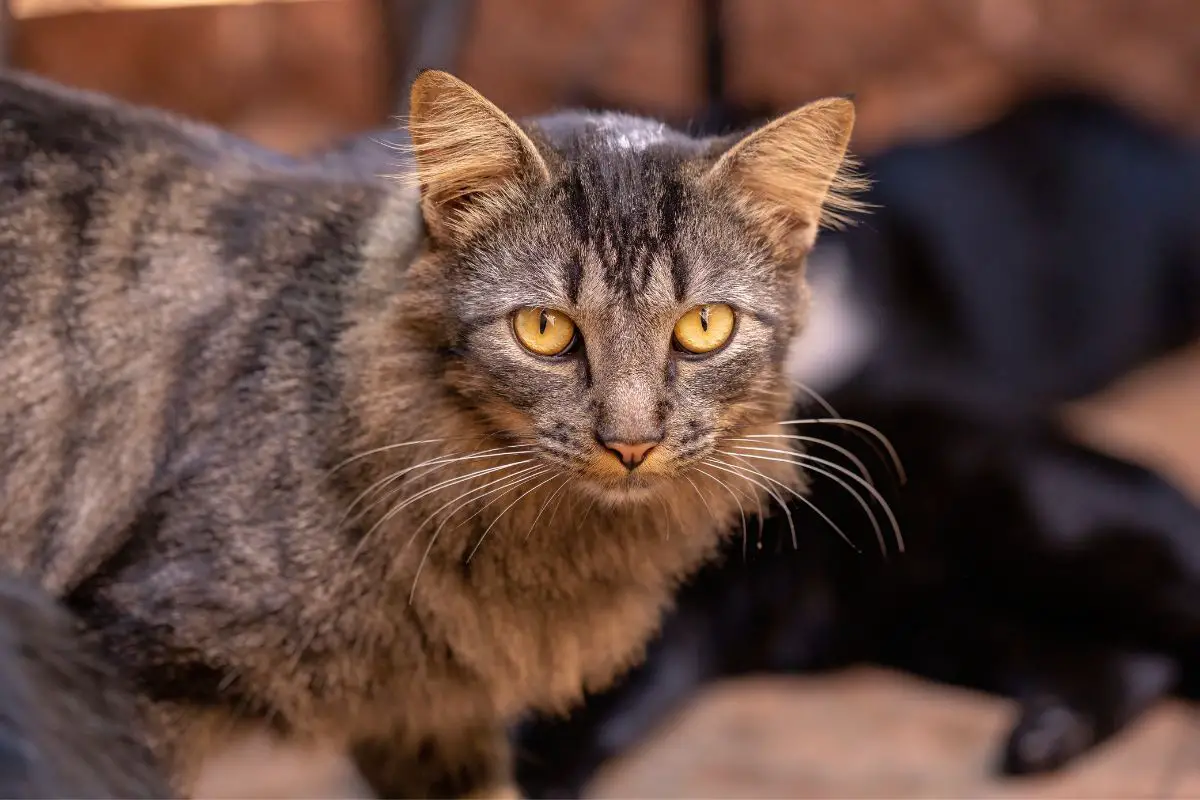Table of Contents
If you are lucky enough to have a little brood of kittens in your home, you may be trying to determine their sex. A newborn kitten’s genitalia starts to mature at around six weeks old which means you’ll have to wait a little while to find out what they are.
For those that don’t have kittens but would just like to know how to identify a cat without invading their personal space, there are other ways to find out this information. Many believe that you can tell this by looking at the facial structure of the cat.
In this article, learn how to tell the difference between a male and female cat by looking at its face.
Why Should You Learn The Gender Of Your Cat?
The main reason to identify the gender of your cat is for spaying and neutering purposes. When a female cat is unspayed, this increases the chances of her having an unplanned litter of kittens which can be a costly and time-consuming feat if you are unprepared.
Cats are much more independent house pets than dogs and are usually allowed to roam around unsupervised. This increases the chances of them interacting with other cats in the neighborhood and becoming pregnant.
If you live in a particularly rural area and aren’t worried about this, then you may not bother spaying your cat. Veterinarians do recommend that non-breeding cats be spayed as this eliminates the risk of ovarian and uterine cancers.
Distinguishing Factors Between Genders
When cats are mature enough, they start to display specific behaviors that indicate whether they are a male or female. For example, male cats are more likely to spray their scent when they feel threatened or stressed.
Sometimes these behaviors can become blurred between the sexes, so it may be easier to try and figure out their sex by looking at the faces. Here are some of the distinguishing features to look out for:
Head
Male cats usually have larger heads than females due to their cranial bone structure, which is thicker and heavier. As with many species, males tend to be larger than females therefore a larger cat is likely to have a larger head to correspond with the rest of the body.
The forehead of the male cat is also typically larger and broader than the female, whose forehead tends to be slim and small.
There is also evidence to suggest that male cats that have not been castrated have larger heads than those that have been neutered after sexual maturity. If a male cat is in-tact, he will have testosterone in the body enabling him to grow larger than a female.
Cheeks
The cheeks are often an identifying feature of male cats. It is thought that male cats have larger, more pronounced cheeks compared to females. Testosterone is again the cause of this difference. Neutered male cats may retain these features to a certain extent.
Larger cheeks act as an indicator of physical fitness to potential mates and help to distinguish the cat from other males.
Nose And Whiskers
The muzzle and nose area of a male cat tends to be broader and larger than a female’s. If you have a few kittens, you may be able to tell early on whether they are male or female by looking at their nose depending on how noticeable the difference is.
Again, their larger noses generally come from the fact that they are larger in general. Therefore, they are in proportion to the rest of their body. In keeping with their noses, male cats will also have more well-defined whisker pads compared to females.

Fur Color
An unusual way of identifying the sex of a cat is through the color of its fur. Cats with orange fur are usually males as it’s unlikely that a female will be ginger or orange-colored.
Similarly, it’s extremely rare for a male cat to have tri-colored calico or orange and black tortoiseshell fur. These cats are usually female as tortoiseshell and calico colorings require the presence of two X chromosomes.
Using coloring as a way to gender your cat can be difficult and we recommend using other methods such as looking at their genitalia or visiting a veterinarian.
Can You Reliably Determine Gender With Facial Features?
It is evident that there are clear distinguishing features between male and female cats. However, this may take a lot of time and practice to accurately guess the gender this way. Veterinarians will advise that you look at the cat’s genitalia to correctly identify the sex.
How To Tell If A Cat Is Male Or Female
Looking at the cat’s genitalia, there are a number of things to look out for that will provide a definitive answer to their sex. When a cat becomes more mature, its genitals will become more obvious and a usefull way of determining sex.
Gently lift the tail of the cat to identify its sex. Under the tail, a female cat will display what looks like two dots. These ‘dots’ are the anus and the vagina, however, the vagina will look slightly longer than the anus and is placed above it.
When lifting the tail of a male cat, the anus should be easily distinguishable as a small dot similar to a female’s. The penis of a cat appears as a small round dot at a greater distance from the anus.
A male’s testicles are not visible on a cat at any point, so this cannot be used as a telltale sign that the cat is a male. If you are unsure even after looking at this area, take the cat to the vet to be examined properly.
The Bottom Line
Generally speaking, male cats have larger facial features and larger heads than female cats as they are in proportion to the bigger physical form. These features can be influenced by when a male cat was neutered due to the presence or absence of testosterone.
